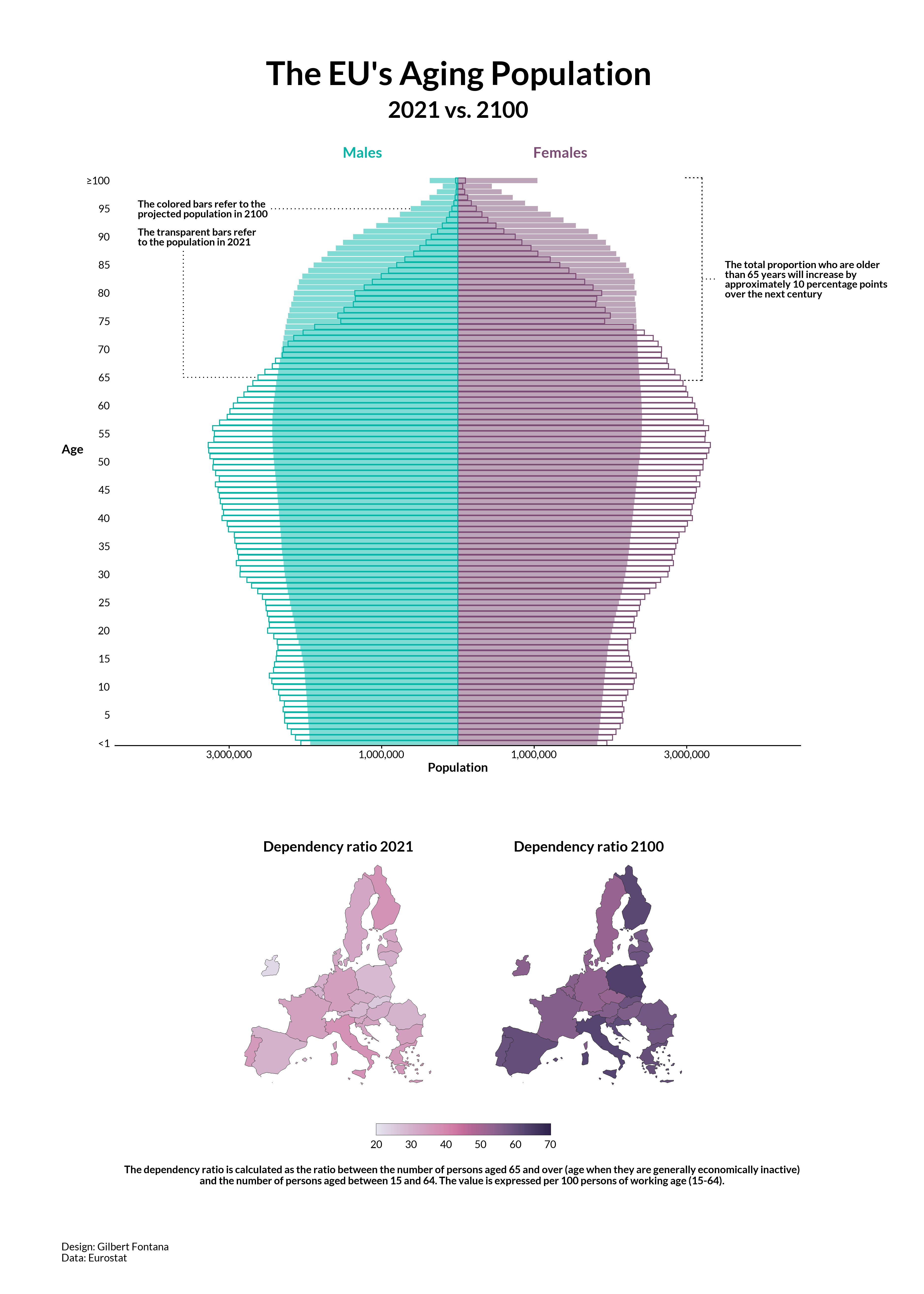Taps Coogan – September 18th, 2022
Enjoy The Sounding Line? Click here to subscribe for free.
Enjoy The Sounding Line? Click here to subscribe for free.
The following article is reposted from Visual Capitalist.

Many countries and regions are expected to see rapidly aging demographics, and the EU is a notable example. By the end of the century, more than 30% of the region’s population is expected to be 65 or older.
This graphic by Gilbert Fontana uses data from Eurostat to show how the EU’s population is projected to change by 2100. In the article below, we explain how this shift could have a dire impact on the region’s economic growth.
Dependency Ratio from 2021 to 2100
The graphic highlights the old-age dependency ratio, which measures the ratio of people 65 and above, and generally retired or needing supplemental income, compared to the number of people that are working age (15-64).
In 2021, the EU’s dependency ratio was 32. This meant that for every 100 working-age people, there were 32 elderly people. By 2100, this ratio is expected to increase to 57.
But what’s the real-life impact of this?
The Impact of the EU’s Aging Population
Typically, the retirement age population is not working and relies on pensions to support themselves financially. Therefore, the bigger the elderly population, the more pressure put on a country’s social safety net.
| Age | EU Population (2021) | EU Population (2100) | % Change |
|---|---|---|---|
| <1-10 | 48,495,075 | 42,216,181 | -12.9% |
| 11-20 | 46,931,543 | 40,137,280 | -14.5% |
| 21-30 | 50,884,150 | 43,247,514 | -15.0% |
| 31-40 | 58,431,638 | 45,628,731 | -21.9% |
| 41-50 | 62,846,623 | 47,136,614 | -25.0% |
| 51-60 | 63,798,230 | 48,320,559 | -24.3% |
| 61-70 | 54,466,484 | 47,430,312 | -12.9% |
| 71-80 | 38,414,111 | 45,671,192 | 18.9% |
| 81-90 | 20,326,431 | 39,411,662 | 93.9% |
| 91-100+ | 3,658,154 | 16,874,396 | 361.3% |
As the population ages, taxes may rise to help cover those inflating costs. And a decrease in a region’s working-age population can also have a significant impact on innovation and experience in the overall workforce.
For example, Japan’s population is also aging rapidly. According to the IMF, this could slow down the country’s annual GDP growth by 1 percentage point in the next 30 years.
Main Causes of An Aging Population
Japan and the EU aren’t the only places in the world that are seeing their population get older—the entire global population is aging.
According to the World Health Organization, one in six people worldwide will be 60 years old or older by 2030. This is happening for two main reasons:
- Drop in global fertility rates
- Increased life expectancies
To help mitigate the risks that come from aging populations, governments need to ensure their pension systems are adequate and adjusted to account for increasing life expectancies and growing elderly populations.
Taps Coogan: In addition to aging, the EU’s overall population will likely shrink by over 10% by 2100 and the working age population is poised to shrink by a stunning 18% with the largest cohort of the remaining population skewed towards the older end of the working age group where labor participation rates are typically less than half that of younger workers. Due to this aging of the workforce itself, the EU is likely to lose something like 20% of current workforce in the next 80 years.
Would you like to be notified when we publish a new article on The Sounding Line? Click here to subscribe for free.
Would you like to be notified when we publish a new article on The Sounding Line? Click here to subscribe for free.

